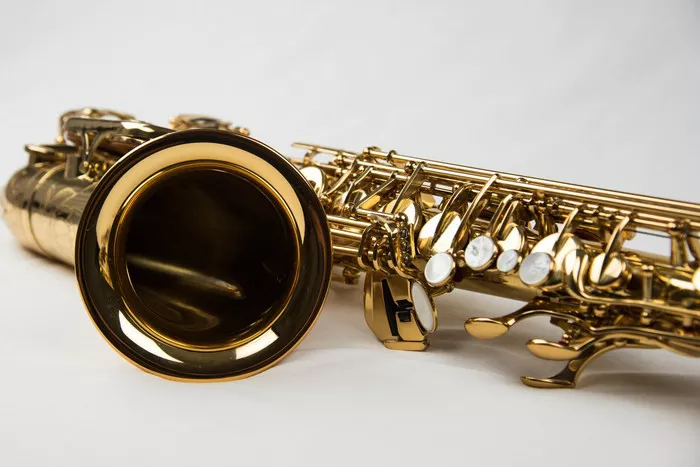The saxophone, often revered for its versatility and expressive capabilities, is a prominent member of the woodwind family. Its distinctive sound has permeated various genres of music, from jazz to classical and beyond. Among the inquiries commonly posed by both enthusiasts and novices is the question of the saxophone’s volume. In this article, we embark on a thorough exploration of this subject, delving into volume comparisons with other instruments, elucidating the nuances between different saxophone types, providing insights into playing quietly, offering advice on creating conducive practice environments, and examining sound projection in diverse settings.
Is a Saxophone Loud?
To gauge the loudness of the saxophone, it’s essential to consider its acoustic properties and compare them with other instruments. While the saxophone is capable of producing a robust sound, its volume can vary depending on factors such as the player’s technique, instrument type, and environment.
In a solo context, the saxophone can achieve significant volume, particularly in the higher registers. However, when placed within a larger ensemble, such as a concert band or orchestra, its volume may be moderated by the presence of other instruments. Compared to brass instruments like the trumpet or trombone, the saxophone’s sound is generally mellower and less piercing, though it can still cut through the ensemble with clarity.
Saxophone Types
The saxophone family encompasses a range of sizes and pitches, each with its distinct tonal characteristics and volume levels. Understanding the disparities between these types is crucial for discerning their relative loudness:
Soprano Saxophone: As the smallest member of the saxophone family, the soprano saxophone typically produces a brighter, more piercing sound compared to its larger counterparts. While it can achieve considerable volume, it may require additional effort from the player to project effectively, especially in lower registers.
Alto Saxophone: The alto saxophone, one of the most commonly played saxophones, strikes a balance between brightness and warmth. Its volume is moderate, making it suitable for various musical settings, from jazz ensembles to concert bands.
Tenor Saxophone: With a deeper, richer tone than the alto saxophone, the tenor saxophone possesses a commanding presence in both solo and ensemble contexts. Its volume is generally robust, allowing it to assert itself in diverse musical genres.
Baritone Saxophone: The baritone saxophone, the largest and lowest-pitched member of the saxophone family, produces a deep, resonant sound. While its volume can be substantial, it may require more airflow and embouchure control to project effectively, especially in the lower register.
Techniques for Volume Control
Despite its potential for volume, the saxophone can be played softly with the right techniques and approach. Here are some tips for achieving a quieter sound:
Breath Control: Focus on controlling your breath to produce a softer, more controlled sound. Experiment with varying levels of air pressure to achieve the desired volume.
Posture: Maintain proper posture while playing, as it can affect airflow and sound production. Sit or stand with a straight back and relaxed shoulders to facilitate optimal breathing.
Using a Mute: Consider using a mute, such as a rubber or foam mute, to dampen the sound of the saxophone. Mutes can be particularly useful for practicing in shared living spaces or late at night.
Embouchure: Adjust your embouchure (the way you position your lips and mouth on the mouthpiece) to produce a softer sound. Focus on creating a tighter seal with your lips while maintaining a relaxed jaw.
Practice Environment
Creating a conducive practice environment is essential for maintaining harmonious relations with neighbors and household members. Here are some strategies for practicing without disturbing others:
Designated Practice Area: Set aside a designated area for practicing where noise levels can be minimized. Ideally, choose a room with thick walls and minimal sound transmission to adjacent spaces.
Soundproofing: Invest in soundproofing materials, such as acoustic foam panels or soundproof curtains, to absorb or block sound waves. Focus on areas where sound is likely to escape, such as windows and doors.
Practice Schedule: Establish a practice schedule that takes into account the noise tolerance of those around you. Avoid practicing late at night or during early morning hours to respect others’ quiet hours.
Electronic Practice Aids: Explore electronic practice aids, such as digital saxophone interfaces or silent practice devices, which allow you to practice with headphones without generating external noise.
Adapting to Different Settings
The saxophone’s sound projection can vary depending on the performance setting and ensemble configuration. Understanding how to adapt your playing technique to different contexts is essential for achieving optimal sound projection:
Concert Bands and Orchestras: In large ensemble settings, focus on blending your sound with other instruments while still projecting with clarity. Pay attention to dynamics and articulation to ensure your saxophone’s sound integrates seamlessly with the ensemble.
Solo Performances: When performing solo, take advantage of the saxophone’s expressive capabilities to command the audience’s attention. Experiment with dynamic contrast and phrasing to convey the intended musical expression.
Amplified Settings: In contemporary music genres, such as jazz or pop, saxophones are often amplified to enhance their presence in the mix. Familiarize yourself with microphone techniques and sound reinforcement systems to optimize your sound projection in amplified settings.
Conclusion
In conclusion, the saxophone’s volume is influenced by a myriad of factors, including instrument type, playing technique, and performance environment. By understanding these dynamics and employing appropriate techniques for volume control, saxophonists can navigate various musical scenarios with confidence and sensitivity to their surroundings. Whether playing softly in a small ensemble or projecting boldly in a concert hall, the saxophone’s expressive potential knows no bounds.


